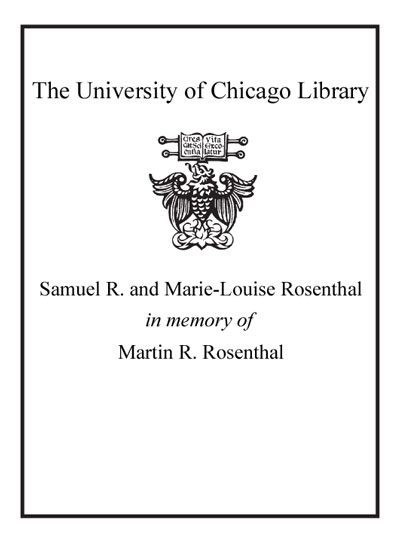Review by Choice Review
The swiftness and severity with which the pogroms accompanying the First Crusade befell the Jews of the Rhineland is chronicled in Chazan's brief and popular study. Chazan examines the collision between the Jews of the Rhineland, their Christian neighbors, and the German crusading forces. This tale of high drama and ardent pathos, of the relations among the Jews, Burghers, and Crusaders, the ferocity of the Crusader assaults, and Christian and Jewish reactions to these unfettered forces is sketched out in the first four chapters. Instances of Christian assistance to beleaguered and besieged Jews, as well as stories of Jewish reactions to the events, including conversion and especially martyrdom, may help nonspecialists come to a more nuanced understanding of the complexity of the forces and events of spring 1096. The second part of the book surveys the tragic events of 1096 in Jewish historical consciousness, the history of antisemitism, and the history of Jewish resistance. As Chazan notes, this work is aimed at a broader audience than his scholarly studies of these events. General readers; lower-division undergraduates. S. D. Benin University of Memphis
Copyright American Library Association, used with permission.
Review by Kirkus Book Review
A plodding study of the background, dynamics, and historical treatments of the Rhineland massacre of Jews in the First Crusade. Chazan (Hebrew and Judaic Studies/New York Univ.) turns a potentially compelling article into an overly long book, with needless repetition and analysis, and too many awkward sentences like the following: ``The foregoing survey of the destruction of the Jewish communities of Worms, Mainz, and Cologne has served to concretize this sense of an unanticipated crisis seemingly erupting overnight.'' What does emerge are some insights into a uniquely gory and (possibly) glorious chapter of diaspora Jewish history from nine hundred years ago. We learn that the pope-inspired crusade was taken over by out-of-control German peasant mobs, aided by local burghers who wanted Jews eliminated as competitors rather than killed in Christ's honor. To avoid torture and forcible conversion by the towns' bloodthirsty mob, almost the entire Jewish population of 3,000 opted for suicide. While the sketchy records of this unique bloodbath are liturgical in style, elegiac in tone, and written 36 years after the fact, Chazan analyzes them as though they were scripture. He quotes Maimonides in pointing out the problems of Jewish law involved with parents slaughtering their children, but there are other occasions where Chazan seems to have little grasp of basic Jewish theology. He does not, for instance, see antimaterial and antisexual passages as aberrant. As Chazan views the events of 1096 in historical perspective, he sees the political struggle of Masada eclipsing the religious conflict of the Rhineland as the modern paradigm of extreme Jewish resistance in the face of imminent destruction. Given its limitations, the book will chiefly be of interest to students of medieval Jewish history. (History Book Club selection)
Copyright (c) Kirkus Reviews, used with permission.
Review by Choice Review
Review by Kirkus Book Review

